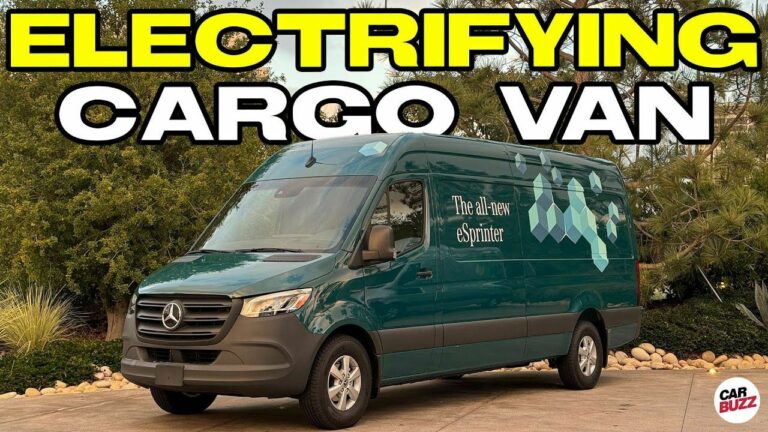Mercedes-Benz is gearing up for a major transformation in the van market, with plans to launch a cutting-edge lineup of electric and combustion-engine vans. The luxury automaker, renowned for its S-Class sedans, recognizes the significant importance of its Mercedes-Benz Vans division.

In 2026, Mercedes-Benz will introduce an all-new generation of electric vans built upon the Van Electric Architecture, or Van.EA. The first models using this new platform will be hitting the market in 2026, and earlier, the brand will reveal the Vision V concept van, offering a preview of the next generation of Mercedes-Benz vanning.
This new, flexible platform will underpin not just one, but three different sizes of vans. Currently, the Mercedes van range includes the Sprinter, the Vito (V-Class), and the Citan. It remains to be seen if the electric-powered generation will follow the same size-oriented lineup, or if new models will appear.
Soon after the launch of the electric van platform, Mercedes-Benz plans to release the Van Combustion Architecture, or Van.CA, for gasoline-powered vans. These architectures, both electric and combustion, will share a high degree of parts commonality, approximately 70 percent, enabling Mercedes to build both types of vans on the same production lines.
Each van architecture will be optimized for its drive type; however, the substantial component sharing will result in greater economies of scale and reduced production costs. This cross-platforming strategy indicates a forward-thinking approach that should benefit consumers.
The teaser image that Mercedes-Benz released of the Vision V shows an LED light bar for the taillights and LED panels integrated directly into the van’s body. The potential integration of lighting behind the Mercedes-Benz badge suggests a future where the vehicle’s appearance, and the display of company logos, can be rapidly customized.
From 2026, the electric vans will have a wide array of variants, similar to the gasoline models. Mercedes-Benz is planning to offer entry-level family vehicles including VIP shuttles and limousines. The Vision V aims to expand the Mercedes-Benz range further into the luxury vehicle market.
Significantly, the plans address nearly every application of the van market. Notably absent from that is the work vehicle. The Sprinter line is offered in various commercial configurations, including chassis cabs and cutaway-style models.
The current Mercedes-Benz electric vans can deliver up to 201 horsepower and a driving range of about 300 miles. That’s significantly longer than what its competitors offer already, and it can handle up to 2,624 pounds of cargo. The next one, on the new electric-specific platform, will likely be even more optimized for work.



